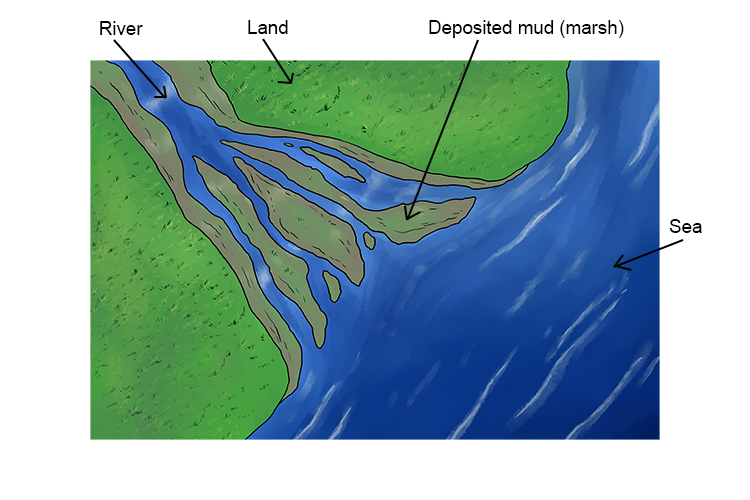Estuary – The tidal mouth of a river where it meets the sea; wide banks of deposited mud are exposed at low tide
To remember the meaning of the term Estuary, use the following mnemonic:
Estimate you are nearly (estuary) at the sea when you reach the mouth of the river.


The diagram above is the area of the estuary.
Estuaries are tidal – the level of water rises and falls repeatedly. When the water level in an estuary drops at low tide, the river slows and forms narrow rivulets.
At this point, fine grains of clay and other materials, carried from the river's higher reaches, are deposited in the estuary. The silt that results from this eventually forms into mudflats, which are an important habitat for wildlife.
This is why estuaries are home to unique animal and plant communities that have adapted to brackish water – a mixture of fresh water draining from the land and salty seawater.
Large numbers of wading birds are often attracted to estuaries because of the colonies of worms, molluscs and crustaceans that they contain.




